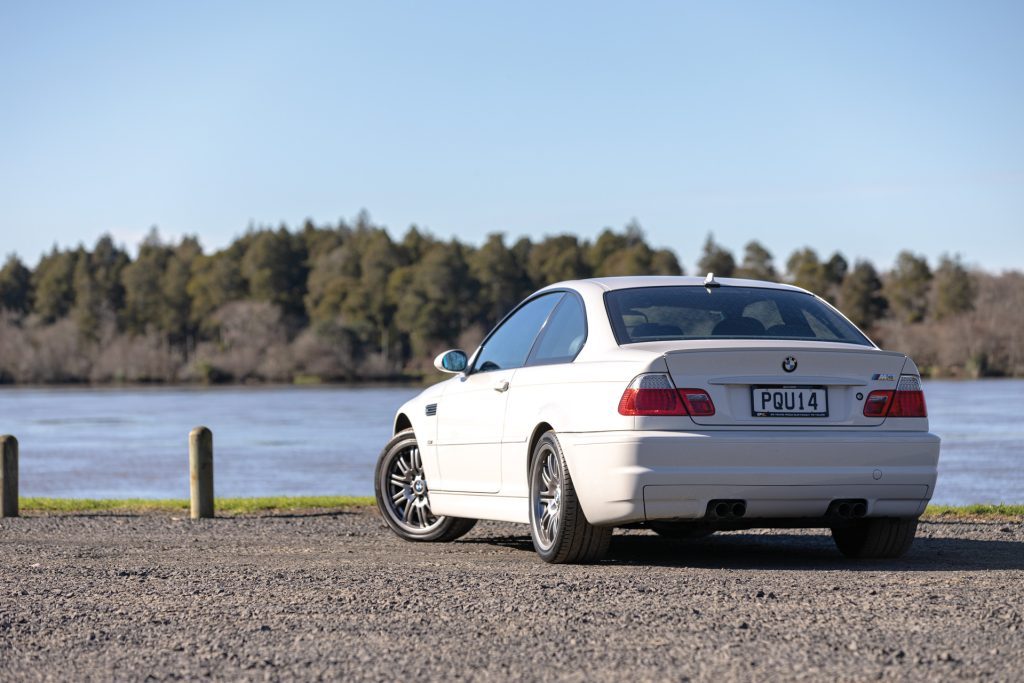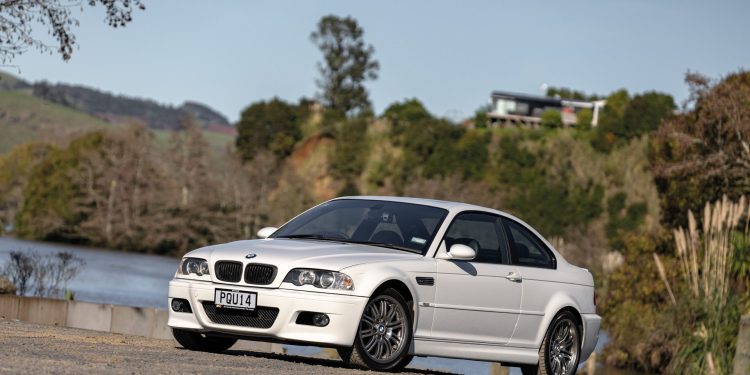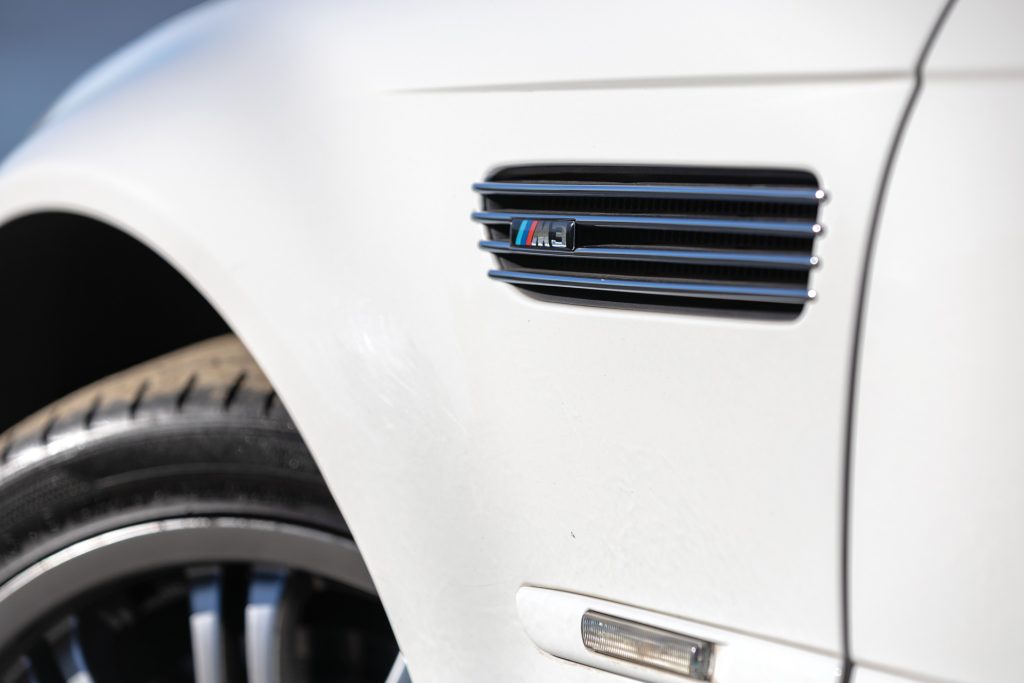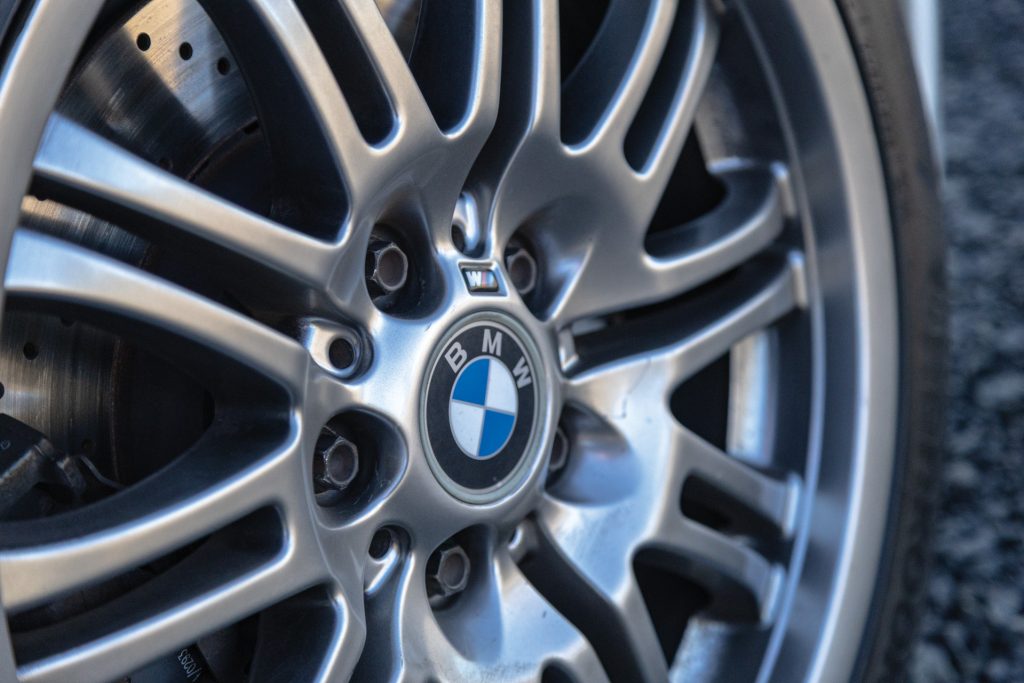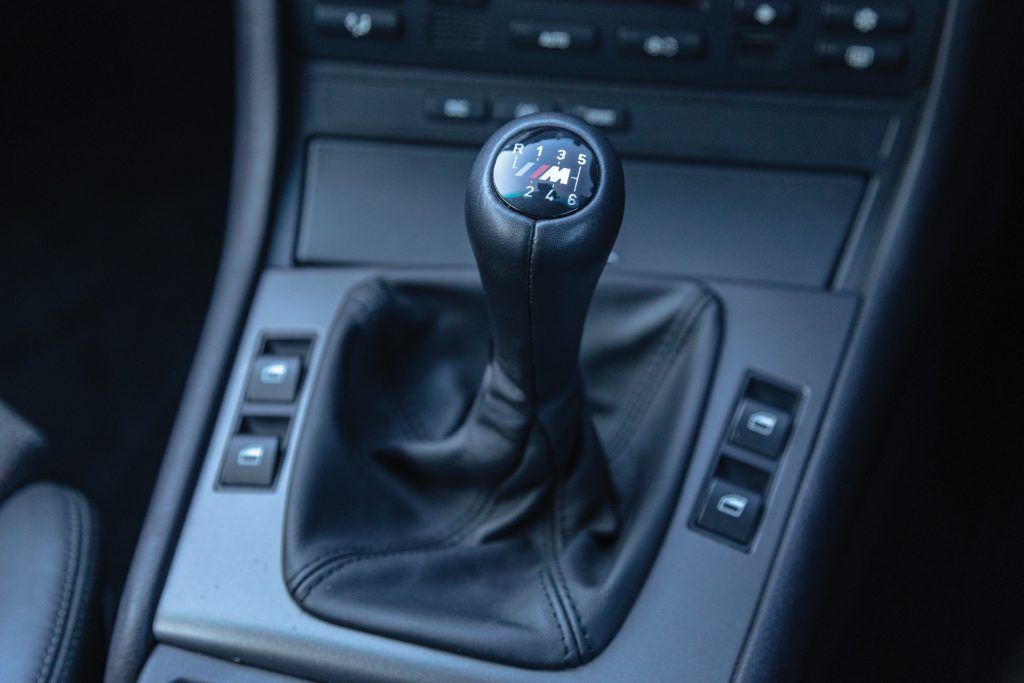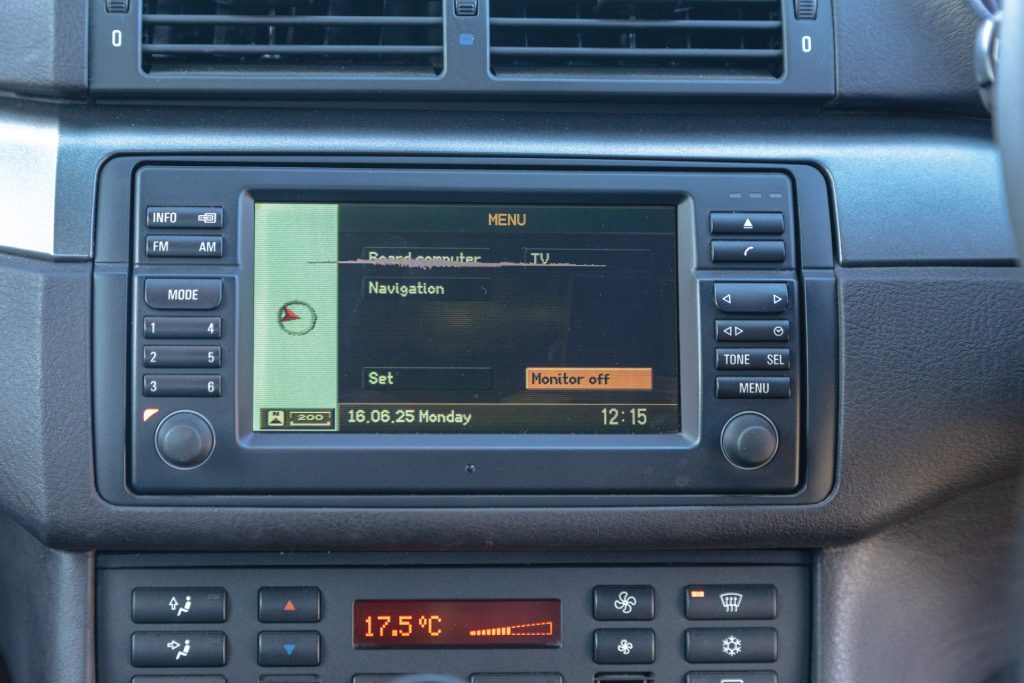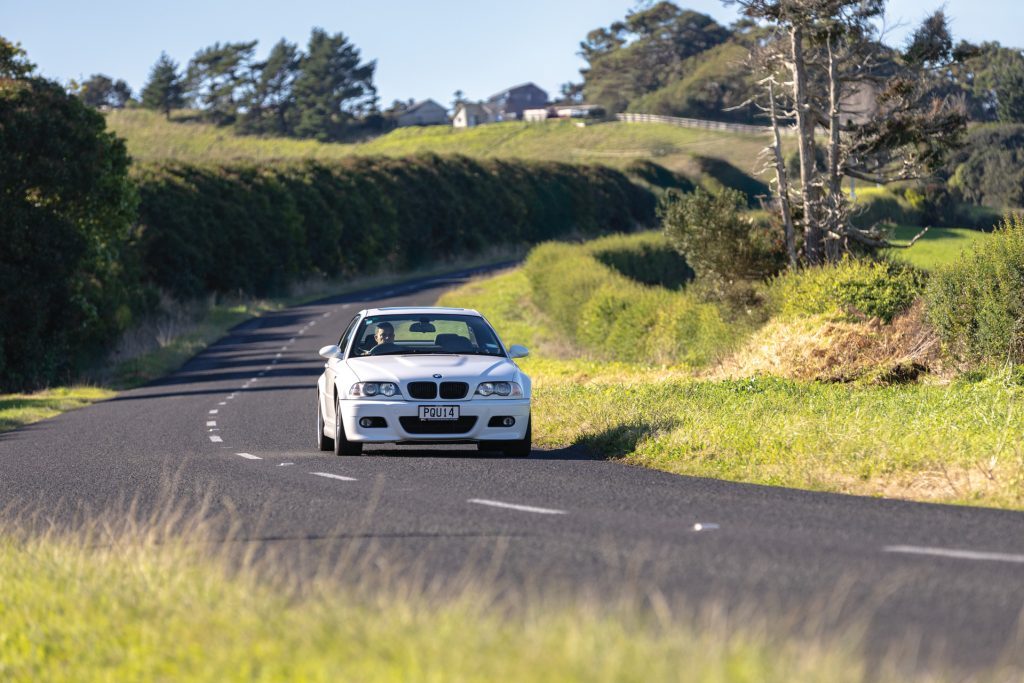2005 BMW M3
Words: Kyle Cassidy | Photos: Alex Schultz
Each enthusiast will have their favourite generation of BMW’s M3. This clean-looking E46 is the gen-three version, the one with a melodious six-cylinder engine.
Finding the carpet with the throttle pedal for the first time in the E46 M3 helped stir the soul. What a wondrous wail. It’s all sorts of good. This is what an M3 should sound like, I thought to myself. But I then check that; the M3 has been engine agnostic over the generations, though the six has been more of a constant. It debuted as a four pot homologation special, the format chosen for its power to weight ratio and a high rev ceiling when tuned for motorsport applications.
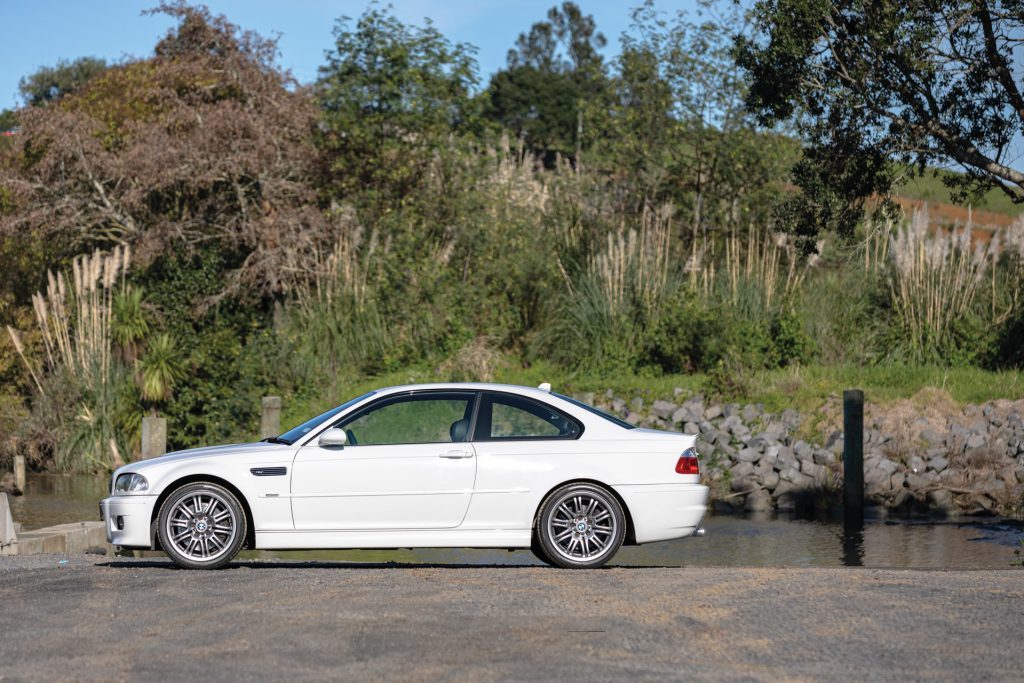
The next generation moved to the larger six-cylinder format, and was carried on by the E46. BMW remained committed to the sort of throttle response only aspiration of the natural kind could provide and so the subsequent generation moved up to a larger V8 with more power and torque but still the same commanding throttle input.
And then came the turbo mills, necessary in order to keep the power competitive while limiting emissions (on the test cycle at least). These have been inline sixes, an engine we see as the most synonymous with BMW, and we guess, so too the M3.
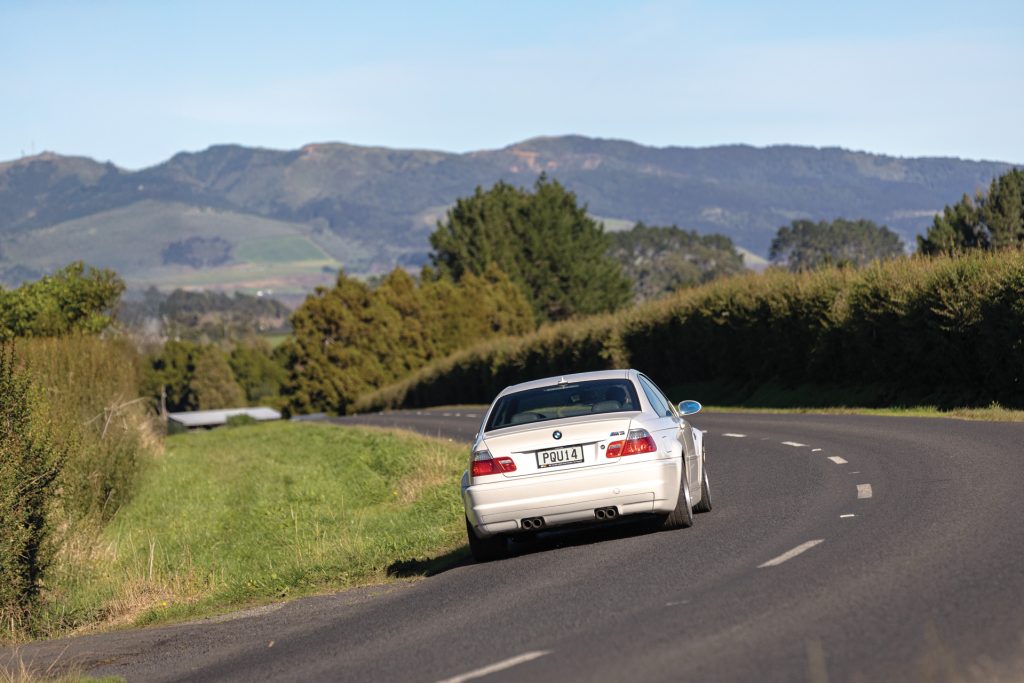
The E46 M3 debuted back in 2000, building on the formula of the previous E36. Its aluminium bonnet was a big deal for weight saving at the turn of the century, while its power dome hinted at what lay beneath. Like the E36, it was subtly sporty, with a slight bulging of the wheel arches signalling this car’s intent. It went without loud spoilers but added M specific side skirts. The wing mirrors reinterpreted the aspheric design of the E36’s. At the rear, it used an optimised lower air dam and discreet gurney flap to manage lift, while the double-chamber exhaust with four tailpipes let you know what you were trying to keep up with.
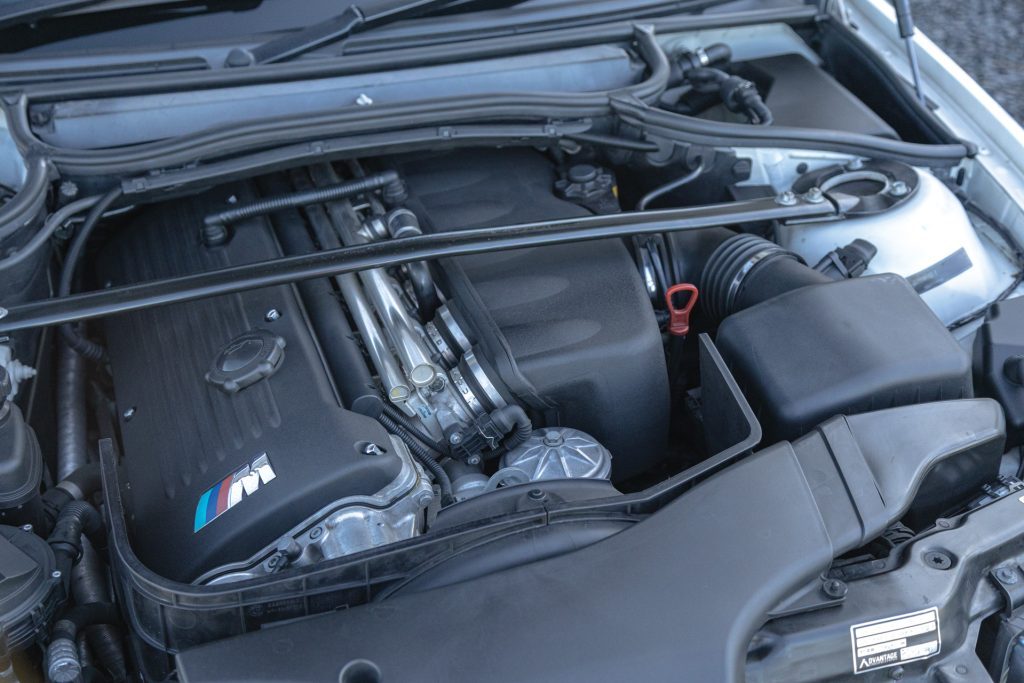
BMW likes to describe its engines as power units, those clinical Germans, the M3’s six described as having “turbine-like performance and running smoothness”. The 3246cc unit was newly developed, sharing very few components with the previous 3.2. It was good to spin to 8000rpm, with a maximum output of 252kW and 365Nm of torque helping out along the way. The new engine was slightly lighter, and they’d also managed to lower the centre of gravity. Both power and torque rose slightly while adhering to stricter emissions standards around the world. That was in part due to the new engine control system. The twin 32-bit processors were a big deal then, capable of handling 25 million instructions per second. This also enabled the use of an electronic throttle. The driver’s input on the accelerator was converted into a signal to open the throttles, and the six pot had individual butterflies for each cylinder. It also allowed for a Sport mode button which, in 2001, was only responsible for altering the throttle map for a sharper response. Basically, it just opened the butterflies right up earlier in the gas pedal’s travel. With other BMW bits like Double VANOS variable camshaft timing, the engine made 106 horsepower per litre while developing 80 per cent of its maximum torque by 2000rpm.
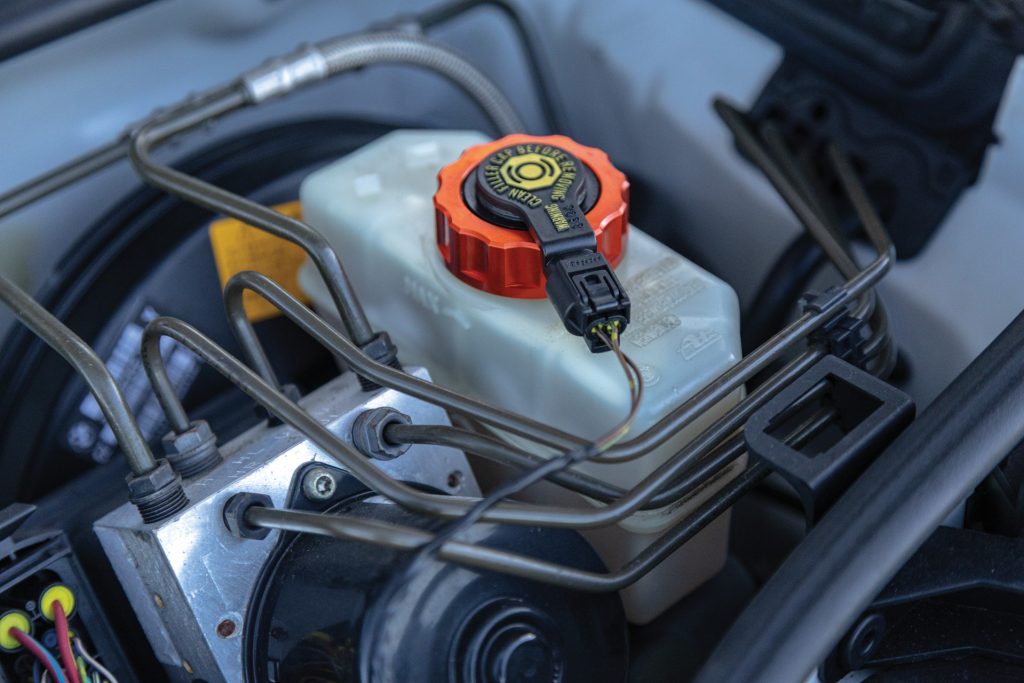
One last interesting engine fact. It was tilted to the right by 30 degrees and so to ensure better oiling, especially during harder driving, BMW gave it ‘quasi dry sump lubrication’ with a better pump and special sump design.
With the M3 Coupe weighing in at 1570kg, the 0 to 100km/h sprint was taken care of in 5.2 seconds. A new six-speed manual transmission was offered alongside BMW’s Sequential M gearbox (SMG). This had debuted in the previous model in 1997, but was upgraded here with improved electronics and hydraulic systems.
Underpinning the M3, BMW made use of aluminium suspension components, while the firm from Munich claimed it was blessed with a near perfect 50/50 weight split. There were no adaptive dampers, just M specific shocks and springs for that ‘feel alive’ ride quality. Dynamic stability control was a standard feature, as was a new locking diff. Replacing the old torque-sensing, self-locking LSD, the E46 debuted BMW’s M diff lock, with its variable locking effect from 0 to 100 per cent to enhance traction. Stopping the show was a compound braking system with a steel rotor mounted on an aluminium hat to reduce weight and thermal build up.

While initially offered as a two-door coupe, a convertible was introduced in 2001, but BMW neglected to offer a four door for this generation. There were a couple of special models including the Coupe Sports Lightweight, debuting in 2003. The CSL benefited from a few carbon bits to help BMW remove 110kg from the mix, while the power unit, complete with a carbon airbox, made 265kW and one heck of an induction note. It featured the sequential M gearbox with M track mode and launch control. There was also a special GTR model, the road-going version of the American LeMans Series racer with a V8 engine and a six-speed manual. It’s ultra-rare however.
And as the E46 generation of M3 gets ever older, sighting them on the road is also a rare thing. We found this M3, in its rare Alpine White hue, at GVI in Auckland. They let us take it out for some reminiscing. I remember driving a BMW M3 new when it was doing the rounds as a press car, a facelifted model with larger 19-inch alloys and the SMG. It had variable shift speeds and flappy paddles and worked okay when treated for what it was; a manual gearbox with an automated clutch action. It was good flat chat, smacking the changes through with a thump but it felt hard on the mechanicals. It liked a little sympathy, a slight lift of the gas pedal eased each shift and reduced the head rocking. But as an auto, it was poor.
That’s why it was good to row this M3 along via its proper six-speed manual. A three-pedal M3 is more desirable now, commanding a premium while swapping the SMG for a manual is also common. The transmission has a likable action, not super slick, especially when the oils are still warming up, but it’s easy to find your way around the gate. The clutch is well weighted too, with a good bite point.
But really it’s the engine that’s the star. It has a wonderfully linear power delivery, and the higher it spins, the better it is. It’s a quick revver, with great pipes. That the sound is all natural makes it all the better. It’s not overbearing, although the road roar can be, one of the negatives here.
The throttle response is another throwback. It was a byword for M cars in this era, and it’s a genuine rarity today. It acknowledges your right foot’s instruction instantly, always ready to go. And then you hit the Sport button and wowzers. In the lower gears, a quick throttle tap sends a jolt through the driveline, so it warrants a smooth approach.
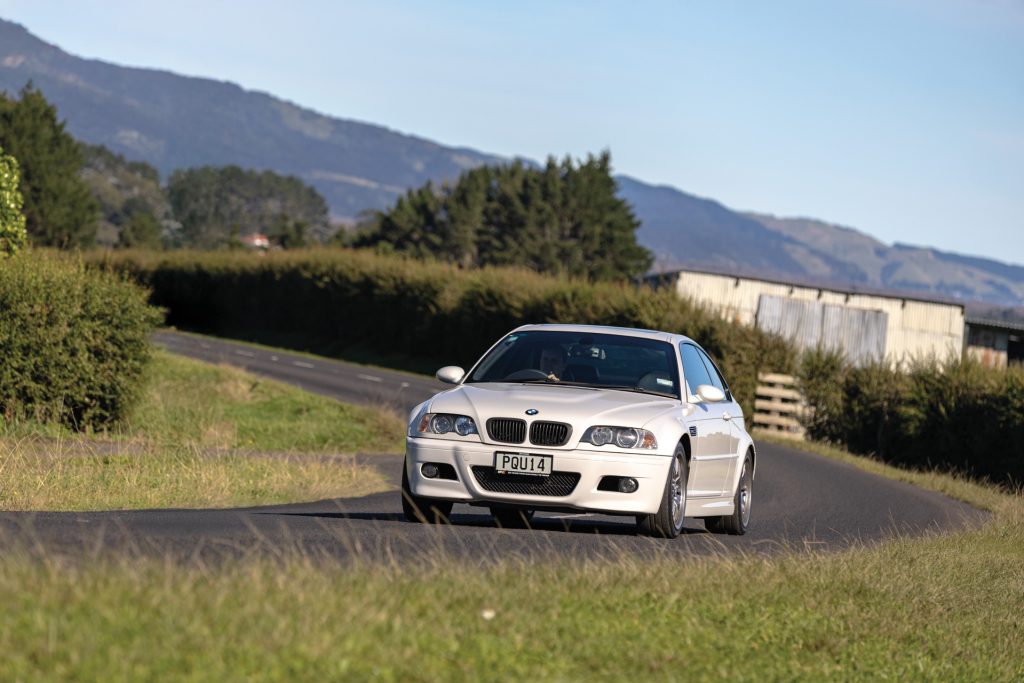
There were no variable steering maps back in M land then, and this one feels a touch light initially. There’s a degree of freeplay just off centre too. But then it turns well and it’s enlivened with a touch of resistance and a reasonable feel for the action. The brakes still feel decent, with a nice progressive action to them. The DSC is from the old days, quick to jump in and stifle the action if you’re a bit too eager. As to the ride quality, it’s not bad after all these years, at the legal limit at any rate. As speeds rise, it would potentially get bumpier. Though with 128,000km on the clock in 20 years, this would benefit from some modern damper technology and fresh bushings. There’s all sorts of stuff available for this car on the aftermarket. We wouldn’t touch that engine however; best to leave that well alone.
This is otherwise wearing its age well, the cabin with just a few squeaks of note but all the surfaces, including the M seats with their cloth inserts, look good, being quality items.
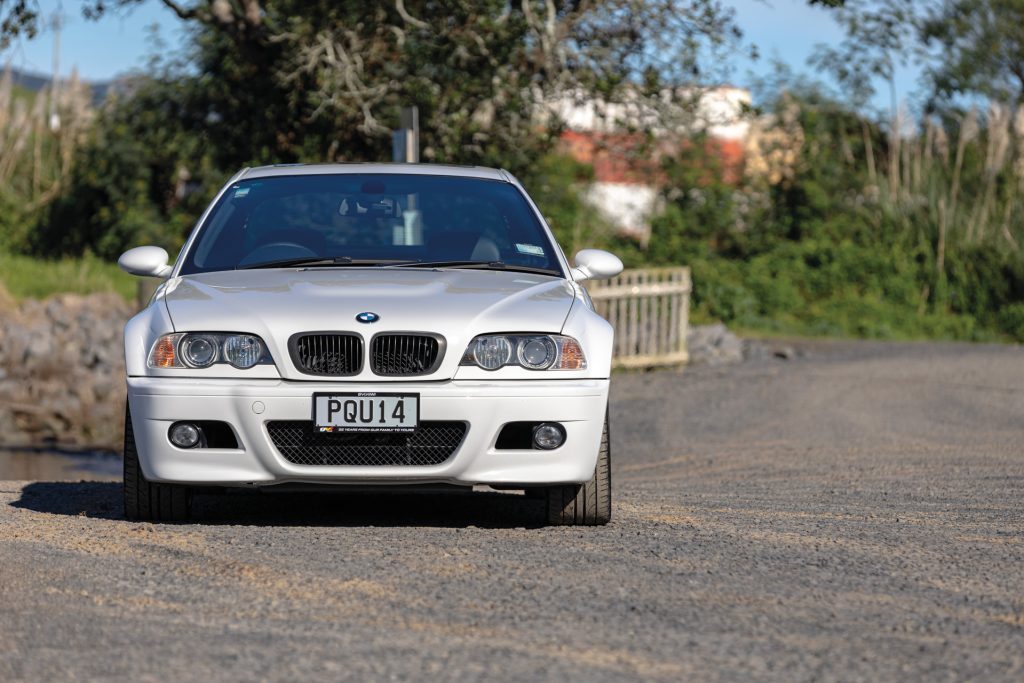
And that M3 usability is still retained; it’s an easy sports car to get in and out of with room for a couple in the back, and a decent hold in the boot.
Thanks to GVI for the loan of the M3. Find more of their specialist cars at www.gvi.kiwi
